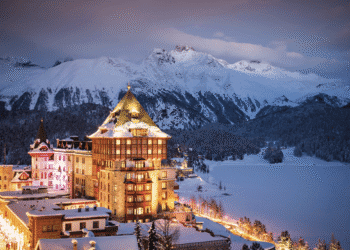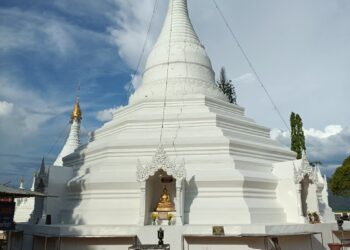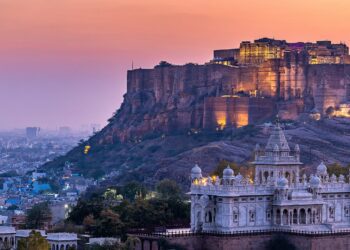India’s mother river, the one that rests atop Lord Shiva’s head, the one that gushes down the Himalayas, inviting people to come and raft in its waves, the one that flows silently through Haridwar washing away the sins of all those who take a dip in its holy water and the one that streams through the spiritual city of Benaras (now Varanasi) with numerous ‘ghats’ dotting its shoreline as people from all walks of life assemble together for the evening ‘ganga aarti’. River Ganges is ethereal and its beauty and best be experienced in the holy city of Varanasi. Here’s how –
Priyanka Saxena Ray
Varanasi is one of the seven holiest cities of Hinduism. The city, according to Hinduism, is believed to provide moksh to those who die and are cremated here. Varanasi, situated on the banks of river Ganges, is considered an abode of Lord Shiva and is a city lingering with chaos, wherein every little ‘gali’ will lead you to the ghats, and thus returning without Shiva’s blessings is not an option here! It is believed that three nights of fasting in Varanasi city can reap you rewards of many thousands of lifetimes of asceticism.

Among major tourist attractions in Varanasi, Jyotirlinga Visvanatha Temple or Golden Temple that was rebuilt in 1776 is dedicated to Lord Shiva. The JnanaVapi Well (meaning ‘Well of Wisdom’) is alleged to have been dug by Lord Shiva himself.
The Ganga Ghats (river front) are the most popular pilgrimage spot of Varanasi and pious centres of music and learning. There is a great tradition of Yatras in the holy city of Kashi and the most sacred path is that of PanchkoshiParikrama, the fifty-mile path with a radius of five miles that cover 108 shrines along the way, with Panchakoshi Temple as its main shrine.
Other popular pilgrimage route is NagaraPradakshina, which covers 72 shrines along the way. A centre of learning and education since times immemorial, Varanasi is a symbol of spiritualism, philosophy and mysticism. Besides its scenic magnificence, the city has produced great saints and personalities like Guatama Buddha, Mahavira, Kabir, Tulsi Das, Shankaracharaya, Ramanuja and Patanjali.
A city as old as time. A city that has seen the world turn, tides change and generation of humans come and go. Varanasi, or Kashi, which has been standing the tests of time for over 5,000 years, is said to be one of the oldest inhabited cities in the world. In Mark Twain’s words, “Benares is older than history, older than tradition, older even than legend, and looks twice as old as all of them put together.” Now that you have a fair idea about the city, here is the list of some ‘must try / must do things in Varanasi’ –
Visit the ancient Kashi Vishwanath Temple
Situated on the western bank of holy River Ganga, Kashi Vishwanath Temple is regarded as one of the most popular Hindu temples dedicated to Lord Shiva. Located in the heart of Varanasi, the temple is a core of faith for millions of Hindus. As per the Shaiva philosophy, it is believed that the Kashi Vishwanath temple is the centre of the worship since a long time. The main deity of Kashi Vishwanath Temple is Lord Shiva, also known as Vishwanatha or Vishweshwarar meaning ‘the ruler of the universe’. The city of Varanasi, the cultural capital of India, is thus known as the city of Lord Shiva. The presiding Jyotirlinga in the temple is considered as the 12th of all the Jyotirlingas in the country.
In the olden times, on special festivals such as Shivaratri, the king of Kashi (Kashi Naresh) visited the temple for worship during which nobody else is allowed to enter the temple premises. Devotees were allowed only after the king had concluded his prayers. Being one of the most famous temples of Varanasi, this temple of Kashi witnesses around 3,000 devotees on daily basis and the footfall increases to 100,000 on special occasions. The importance of the Kashi Vishwanath Temple also stems from the fact that it finds mentions in several Holy Scriptures of the Hindus. On the outside, the temple is adorned with intricate carvings that impart a divine quality to the facade. There is also a well present within the temple complex called Jnana Vapi or wisdom well. Other than that, the temple also houses several other small temples such as Kaalbhairav, Vishnu, Virupaksh Gauri, Vinayaka and Avimukteshwara.
Attend the morning Ganga Aarti at Assi Ghat
The Assi Ghat is placed at the confluence of the Rivers Assi and Ganga and is famous for the large Shiva Lingam installed under a peepal tree. It has immense religious importance and has been mentioned in the Puranas and various legends as well. Assi Ghat is the heart of Varanasi and the locals, as well as, the tourists flock there to enjoy the pleasant weather and the amazing view of the sunset and sunrise at the Ganges. The Ghat has been a famous spot among the local youths to while away their time in the evening. Recently, the Ghat started having Aarti in the morning, which is a must watch if you want to experience the true feel of Varanasi. Also, the tourists generally travel from Assi to Dashaswamedh Ghat in the evening by boat, to see the famous aarti conducted there every evening which is an experience like none other.
Take a boat ride to Dashashwamedh Ghat
As the name suggests, it is believed that this is the place where Lord Brahma performed the Dasa Ashwamedha sacrifice. This ghat is a religious spot and many rituals are performed here. One must try to be in Varanasi at the time of Kartik Purnima to witness a celestial manifestation in the city of lights – Dev Deepavali. This Ghat is most famous for the Ganga Aarti conducted every evening, and hundreds of people visit it every day. Watching the Ganga Aarti is an experience which cannot be explained in words. When in Varanasi, make sure not to miss this calming experience.
Say a prayer at the Sankat Mochan Hanuman Temple
The Sankat Mochan Hanuman Temple is situated by the River Assi and was built in the 1900s by the freedom fighter Pandit Madan Mohan Malviya. It is dedicated to Lord Rama and Hanuman. Varanasi is always related to Sankat Mochan Temple and is an essential part of this holy city. Every person visiting Varanasi visits this temple and pay their respects to Hanuman. The laddoo offered at this temple is essentially famous among the locals. While visiting Sankat Mochan be aware of the monkeys who throng the temple premises and tend to steal away the prasaad. However, they are totally harmless if you let them be on their own.
The city of temples or Banaras, as it is popularly known, is a holy city on the banks of the River Ganga. Said to have been discovered by Lord Shiva, this town has immense historical as well as religious importance. Not just a place where pilgrims throng to visit the temples, Varanasi is also the destination where most people come to spend their last days as it is believed that an individual who dies in this sacred place can attain salvation. Varanasi is one of the oldest continually inhabited places in the world and oldest in India.
Its narrow lanes are filled with temples, fabulous food outlets, cows and bulls standing midway and numerous people flocking here and there. Varanasi is also called the “Galiyon ka sheher”, meaning the city of lanes, “the city of temples”, “the religious capital of India”. It is also called the “city of learning” as it has always been a big learning centre since the ancient past. The Banaras Hindu University, one of the oldest and largest Indian universities is also situated here. Varanasi is also famous for its Kashi Vishwanath Temple, which houses one of the 12 revered Jyotirlingas. Sarnath, which is one of the biggest pilgrimage sites for Buddhists, is located nearby and Varanasi is typically the base to visit Sarnath. However, the most major attraction here is the River Ganga itself. The evening ritual, called the Ganga Aarti is a must see for everyone, without which, perhaps, a visit to Varanasi is incomplete.



































